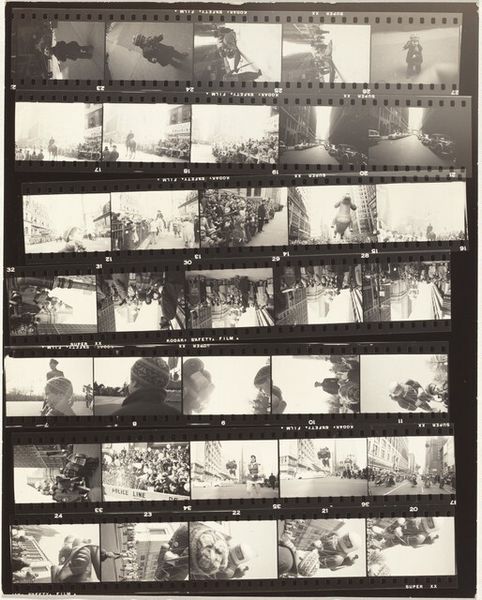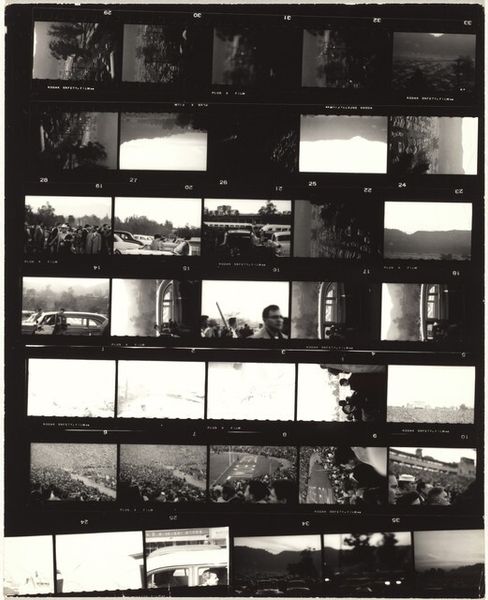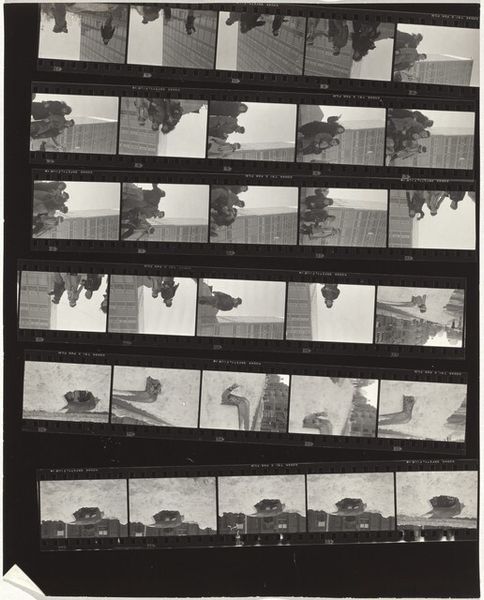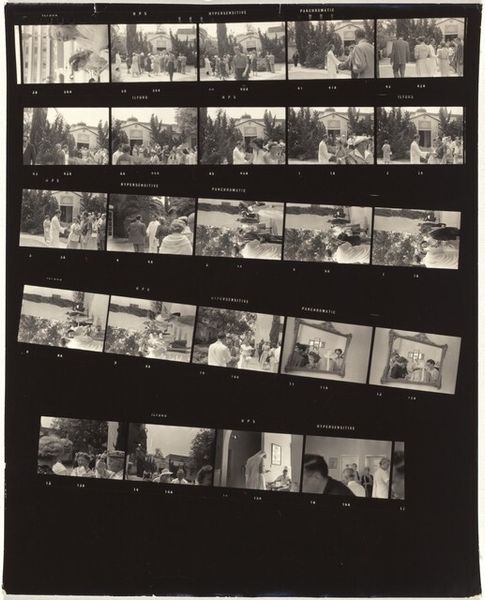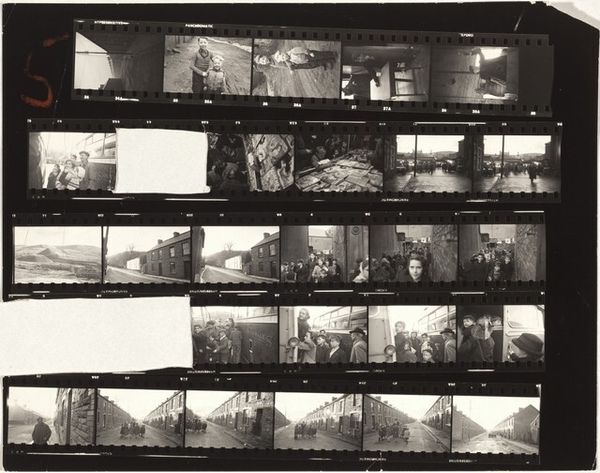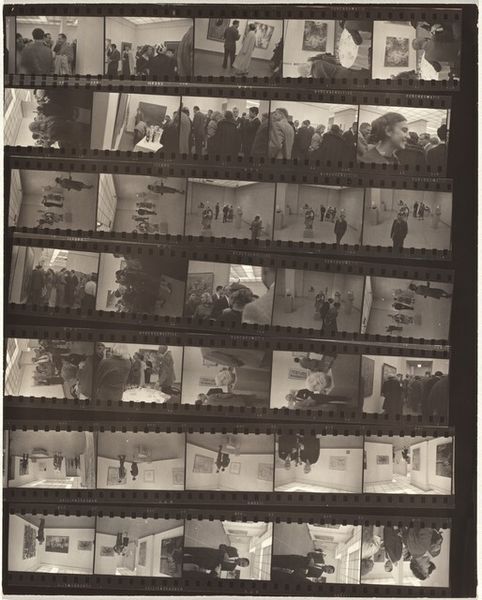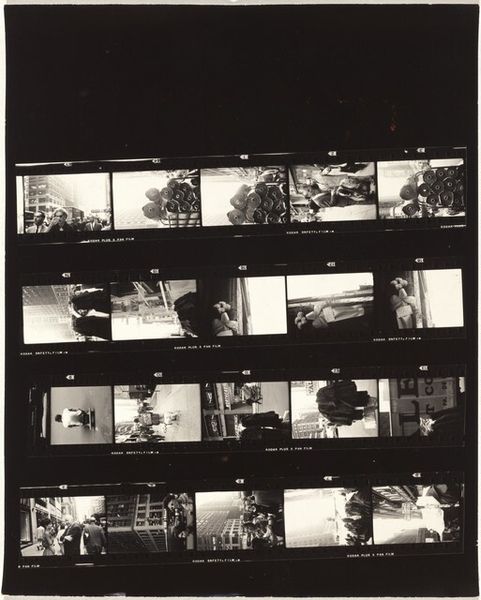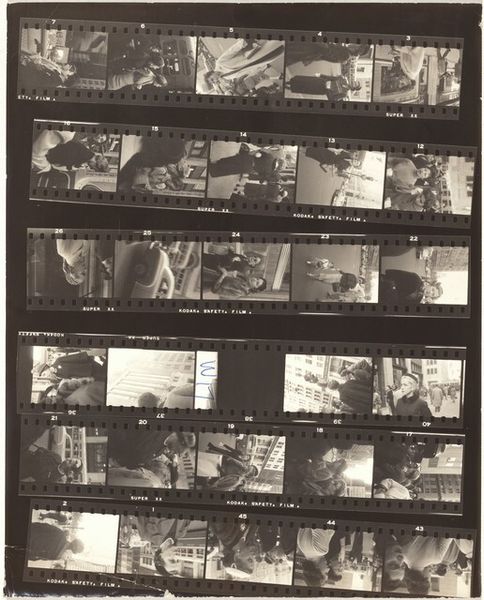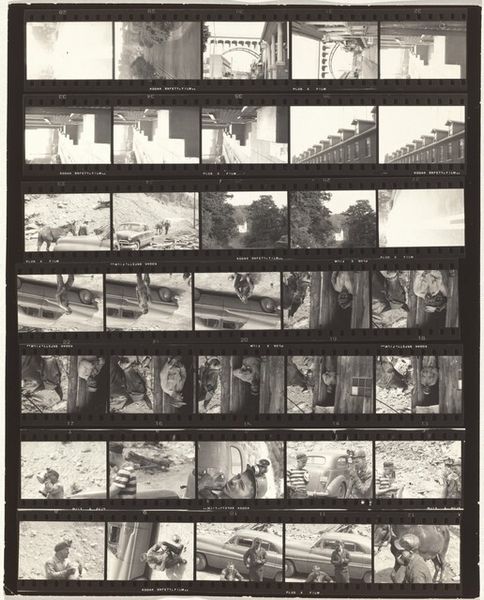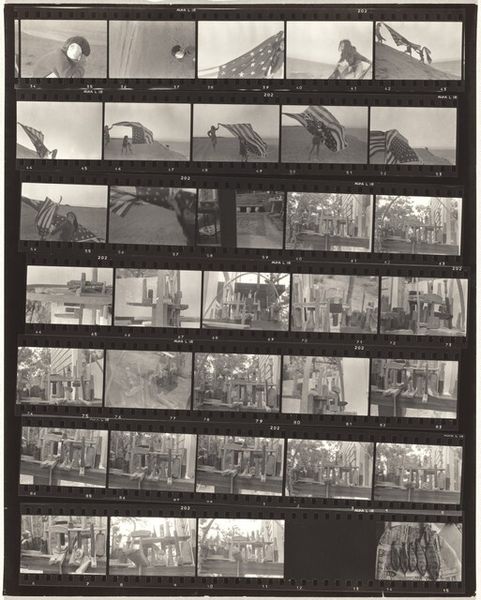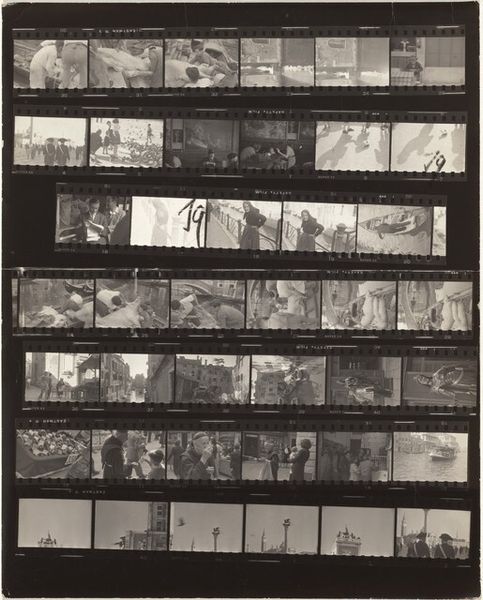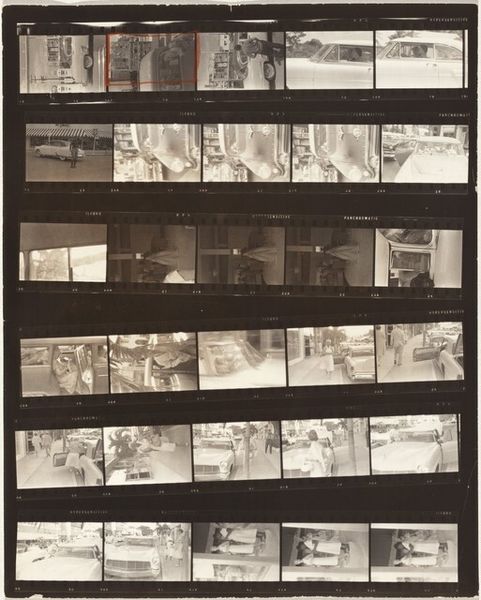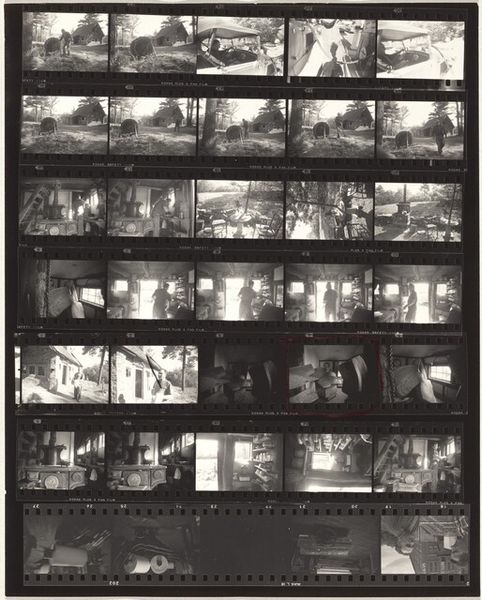
Dimensions: overall: 25.3 x 20.5 cm (9 15/16 x 8 1/16 in.)
Copyright: National Gallery of Art: CC0 1.0
Curator: This is Robert Frank's "Guggenheim 410--Los Angeles," a gelatin-silver print from 1955-56. The work is actually a contact sheet presenting a sequence of images from his travels across the United States, later becoming part of his book "The Americans." Editor: The sheer quantity of images—a whole journey compressed onto one surface—is the first thing I notice. There's a nervous energy; a feeling of rapid documentation that both intrigues and slightly overwhelms. Curator: Absolutely. Frank was seeking to capture the complexities of American society. What might seem like disconnected snapshots actually reveal societal dynamics and the individual experience within those larger systems. This presentation makes me consider W.E.B. Du Bois's concept of double consciousness in Black Americans – always aware of how one is seen, not just how one sees oneself. These fleeting glimpses speak to that divided self. Editor: It’s the light that captivates me – harsh contrasts rendering palms trees almost ghostly. Palms often function as symbols for paradise and relaxation but are captured with a certain bleakness here. Could it be a reference to something that appears desirable but may hold internal dissonance or latent suffering? Curator: Precisely, there's a tension created between the iconic symbolism of Los Angeles – the palms, sunshine – and the grainy, somewhat unsettling presentation. It complicates the narrative of the 'American Dream,' showing fractures and alienation that weren’t typically acknowledged in mainstream media at the time. His focus moves us away from glamour to real life on the streets. Editor: I think you are right, Robert Frank is showing us something deeper than a picture postcard view. Seeing several images in a sequence really gets to the way we form memories as well. There is the perfect shot of the perfect palm tree, and yet we recall moments, rather than perfection, in sequences. What appears broken somehow reveals our cultural patterns of seeing. Curator: And by extension, perhaps our shared understanding that reality rarely lives up to the idealized images we are fed. I find the framing devices in the images and as an object itself equally striking as they help shape our perceptions of each moment, which I read as inherently political. Editor: An important detail indeed. These fractured images of familiar symbols feel almost like pieces of memory to rearrange at our will. It’s this disruption that causes new questions to the front. Curator: Frank's piece challenges the romanticized notions of American identity prevalent during that period and offers a critical, yet empathetic, view. Editor: It’s that ambiguity, that ability to hold multiple perspectives, that makes the image resonate even today, for me.
Comments
No comments
Be the first to comment and join the conversation on the ultimate creative platform.
